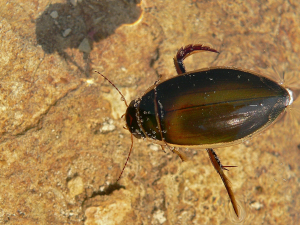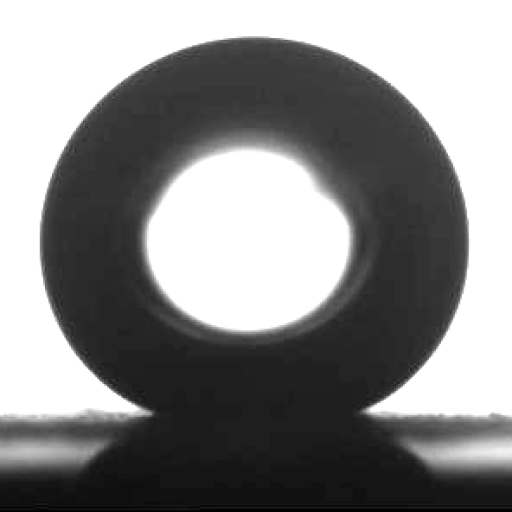Great Diving Beetle

The great diving beetle and its larva are aquatic beetles that breathe with the aid of a plastron. However, we can’t see a silvery sheen from the plastron as with other animals because their plastron is mostly hidden by their wing cases.
Unlike the water boatman, this beetle lives at the bottom of ponds and therefore has further to go to collect air. Its larvae come to the surface to exchange air, thrusting their abdomen through the water surface like a mosquito larva. The adults exploit diffusion. As the air becomes depleted in oxygen, diffusion into the area increases in rate and replaces that lost. This mechanism is only possible for animals that can tolerate low oxygen concentrations.
In experiments, detailed in the publication below, we show that it would be possible for a human to do this using a sphere they could stand in. However it would not be pleasant, as the oxygen concentration would fall to a low level.
Publication
Plastron properties of a super-hydrophobic surface N.J. Shirtcliffe, G. McHale, M.I. Newton, C.C. Perry and F.B. Pyatt, Appl. Phys. Lett. 89 (2016) art. 104106
